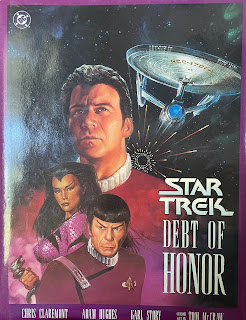A bear in North Carolina was recently caught on video retreating from a second-story porch as a retired English teacher deployed the well-known tactic.
Speaking from the safety of the opposite side of a patio door, the teacher told the bear: “Get down from there right now! Go! Go! Go! Go! You get down from my porch right now! What do you think you’re doing on my porch?”
And the bear, following in the footsteps, er, pawprints, of generations of misbehaving students, shinnied down the side of the condo and slinked off, accompanied by a chorus of “I see you!” from above.
In a later interview, the teacher, Debbie Tomlinson, extolled the power of her teacher voice with the ursine intruder. But, she said, it's a tone she seldom needed in the classroom. “I had wonderful students,” she told "Inside Edition."
Since I grew up hearing my share of teacher voice, my sympathies are with the bear. I wasn’t the worst student, but I wasn’t the best, either. My usual role, the kid who never threw spitballs but instead lobbed an ongoing commentary about the lesson, sometimes led to negative teacher attention.
An elementary school teacher heard my little friend and me coming back from recess, reciting some of George Carlin’s seven words you can’t say on TV.
I wriggled out of punishment because I wasn’t saying any of the Great Unmentionables at the moment her bionic ears singled out the expletives from the rest of the bleating herd. Had she tuned in two seconds earlier, it would have been a different story.
As it was, she ushered my unfortunate classmate to the principal’s office, accompanied by a teacher-voice greatest hits collection of “What did you say? I can’t believe my ears! Did you say what I thought you said?”
He looked as abashed as that poor bear.
On another occasion, a priest offered a variation of teacher voice during confession.
“Bless me, Father, for I have sinned,” I began, and proceeded to unload sins I had squirreled away for the past six months. One was using creative swear words (you can see a theme here).
The priest asked for examples, which I thought was odd. But so is kneeling in a dark closet, so what the heck, I shared a few of my verbal concoctions.
“You remind me of myself when I was younger,” he said, laughing. “Once, I put an extension cord inside a copy of the Electric Bible and asked my mom where I could plug it in. You sound like a good kid. What are you, 16 or 17?”
“No, Father. I’m 10.”
“You’re what?”
Apparently, there are age categories for certain sins, and what can be written off as “boys being boys” when you’re driving and shaving is serious stuff when you’re still playing with G.I. Joes and chewing Bazooka bubblegum.
At any rate, the good-natured comments stopped. Instead, out came the priest’s teacher voice, unmistakable in tone while still maintaining a volume suitable for church. No easy trick, that. After a strident lecture that would have shamed a grizzly, he rained down an exceptionally heavy penance of Hail Marys and Our Fathers.
Well, the great wheel of karma has turned, as it does for saints and sinners alike, and I am now a teacher myself. Like Ms. Tomlinson, I have wonderful students and almost never use my teacher voice.
But on the few occasions when I have, it has been met with mixed results.
Once, I attempted to scold a room of talking students, probably for the first time the entire year. The sound of Angry Teacher, as opposed to Goofy Teacher, Boring Teacher or Lecturing Teacher, was so novel that all heads turned in my direction.
“What are you doing, Mr. Schillig?” one of them asked me, incredulously.
I stopped, looked at their confused faces and admitted, “I don’t know.”
Then we all started laughing.
It was no animal-slinking-off-the-porch moment, but I survived the lesson and the day, in much the same way I’ve survived post-recess swear-a-thons, awkward church moments and my entire professional career.
Barely.
At least nobody filmed it.
Reach Chris at chris.schillig@yahoo.com. On Twitter: @cschillig.





